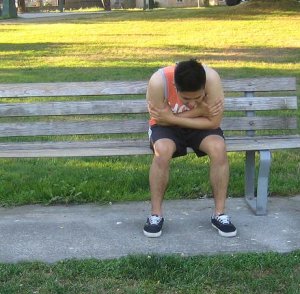Thoracic back pain is a type of pain that passes through the spine. The thoracic spine is located between the cervical spine and the lumbar spine. The pain can be felt if these areas becomes irritated and inflamed due to vehicular accidents, sports injuries and structural deformities.
https://www.youtube.com/watch?v=mPOv8aIonVc
Causes of thoracic back pain
- Poor posture over a period of time
- Overuse, injury, muscle strain to the muscles, ligaments and discs that support the spine
- Pressure placed on the spinal nerves due to a herniated disc.
- Fracture of one of the vertebrae
Take plenty of rest at least for a day. Return to regular activities slowly and avoid things that cause severe pain. - Myofacial pain affecting the connective tissue of a muscle or group of muscles
- Osteoarthritis due to breakdown of cartilage that help in cushioning the small joints of the spine.
- Sometimes, conditions such as cancer, gallbladder disease and infections can cause the pain.
- Weak muscles
- Regular and improper way of backpack use
- Frequent heavy lifting
- Slipped disc
Symptoms
- Muscle tightness or stiffness
- Dull, burning or severe pain
- Weakness in the arms or legs
- Loss of bowel or bladder control
- Numbness or tingling sensations felt in legs, arms or chest
Treatment
- Take plenty of rest at least for a day. Return to regular activities slowly and avoid things that cause severe pain.
- Take the prescribed over-the-counter pain medications such as acetaminophen and non-steroidal anti-inflammatory drugs (NSAIDs) to lessen the pain and inflammation.
- Apply heat or cold on the affected area. Heat lessens the pain and stiffness while ice lessens the pain and swelling. Another alternative is applying heat and ice alternately.
- Seek the help of a physical therapist for some rehabilitation exercises to stretch and strengthen the muscles in the back, shoulders and stomach that supports the spine.
- Maintain good posture to prevent stress on the back. Stand and sit tall with shoulders and stomach pulled in to give support the back. Avoid slumping or slouching.
- Sleep in a firm mattress to have a proper support to the back. Change mattress every 7 years.
- Cessation of smoking. Smoking lessens the flow of blood and slows down the healing process.
- Use the proper way or techniques when lifting.

